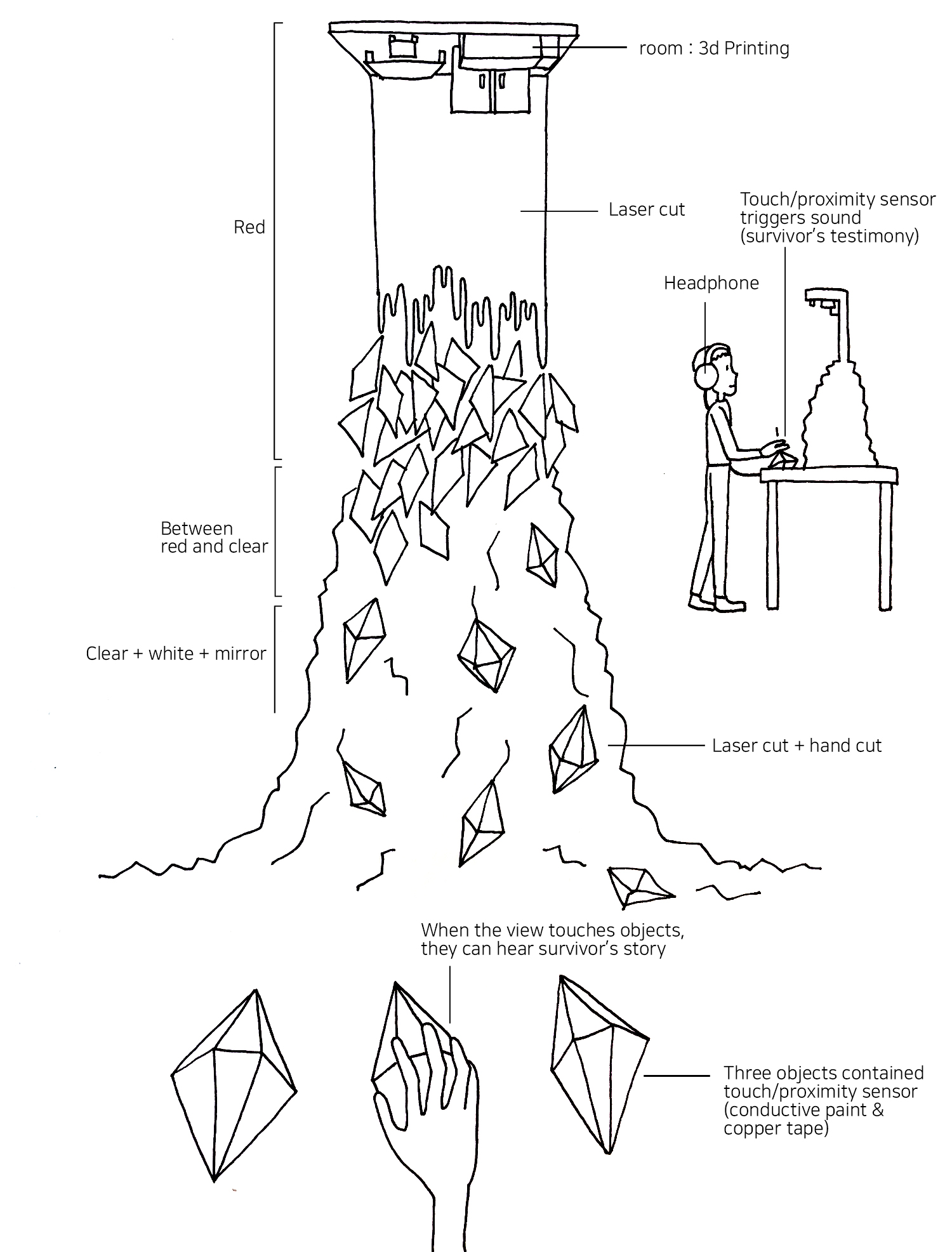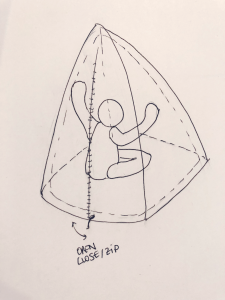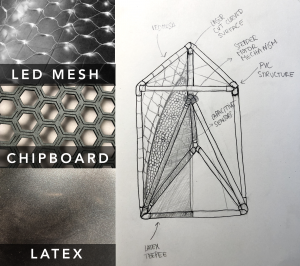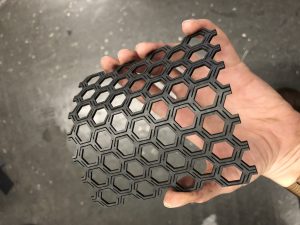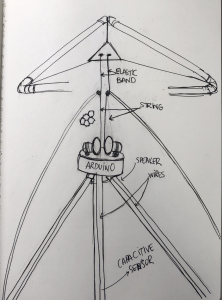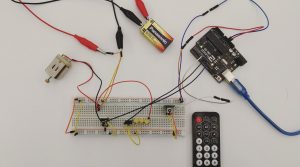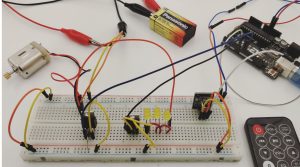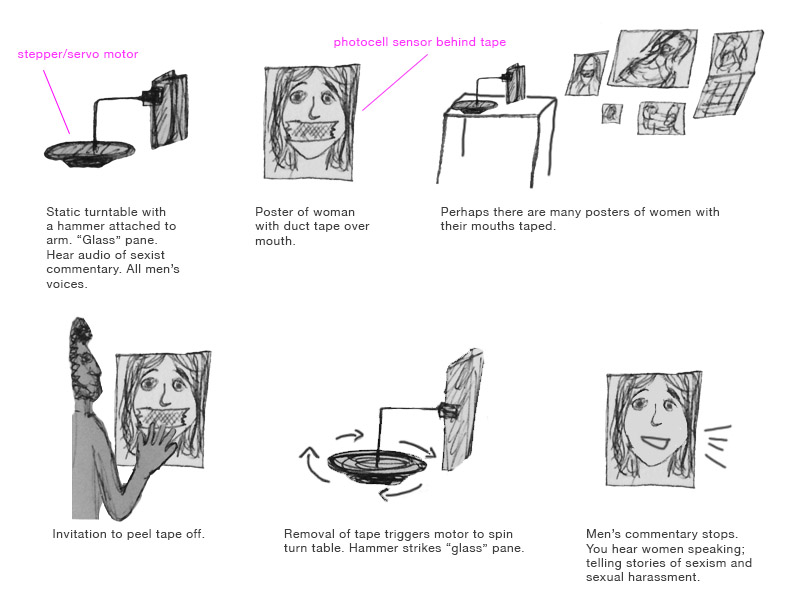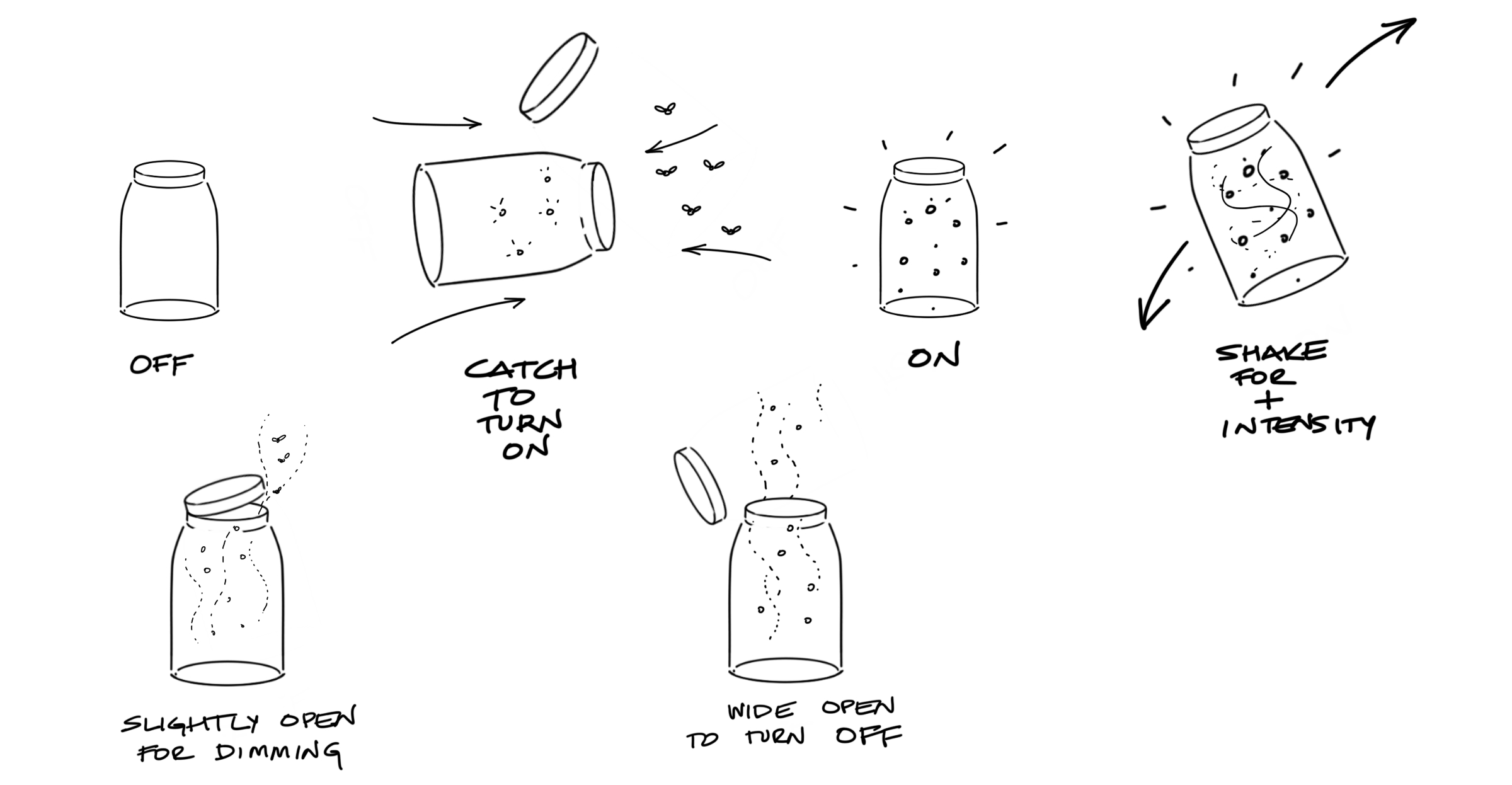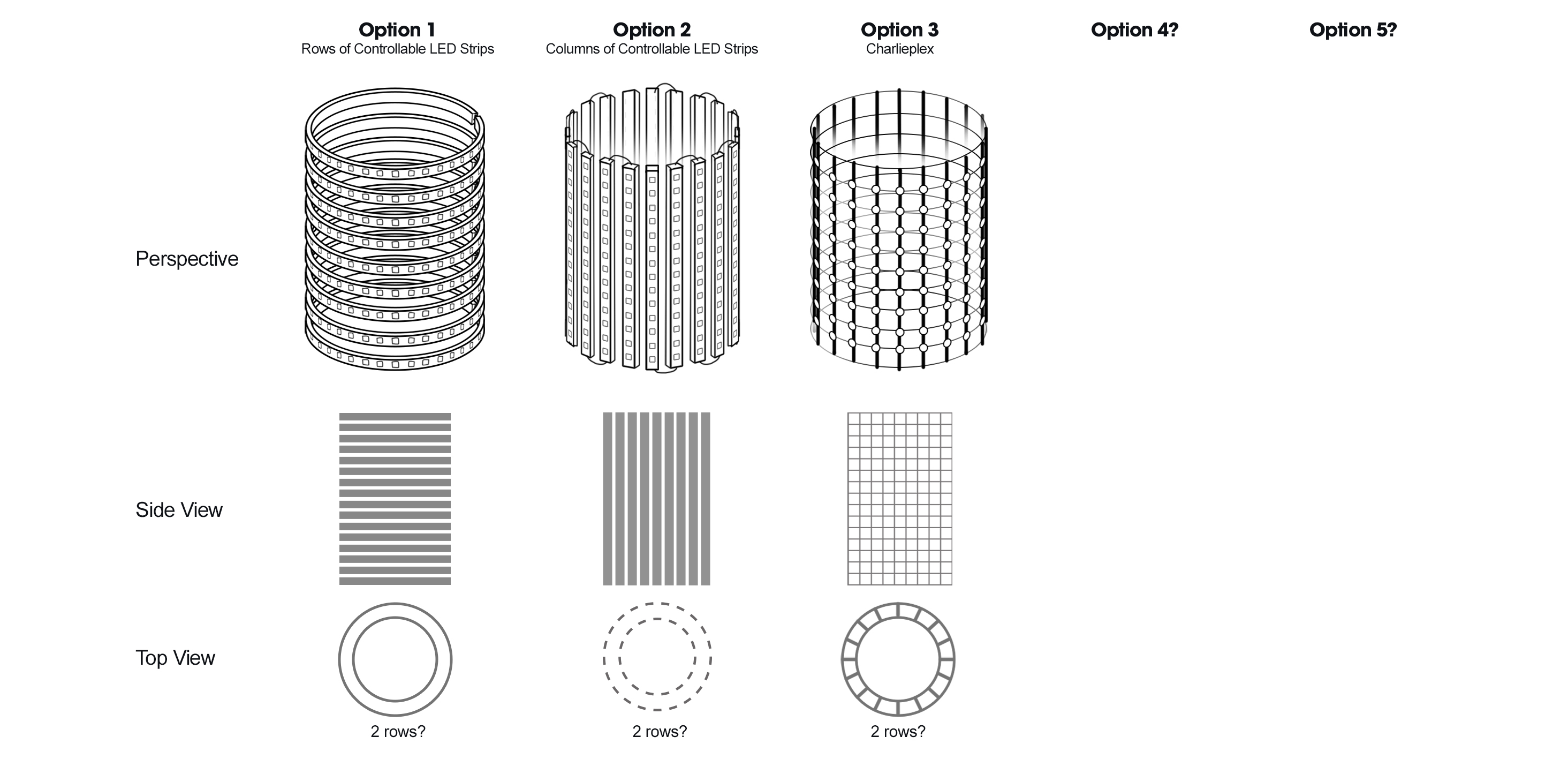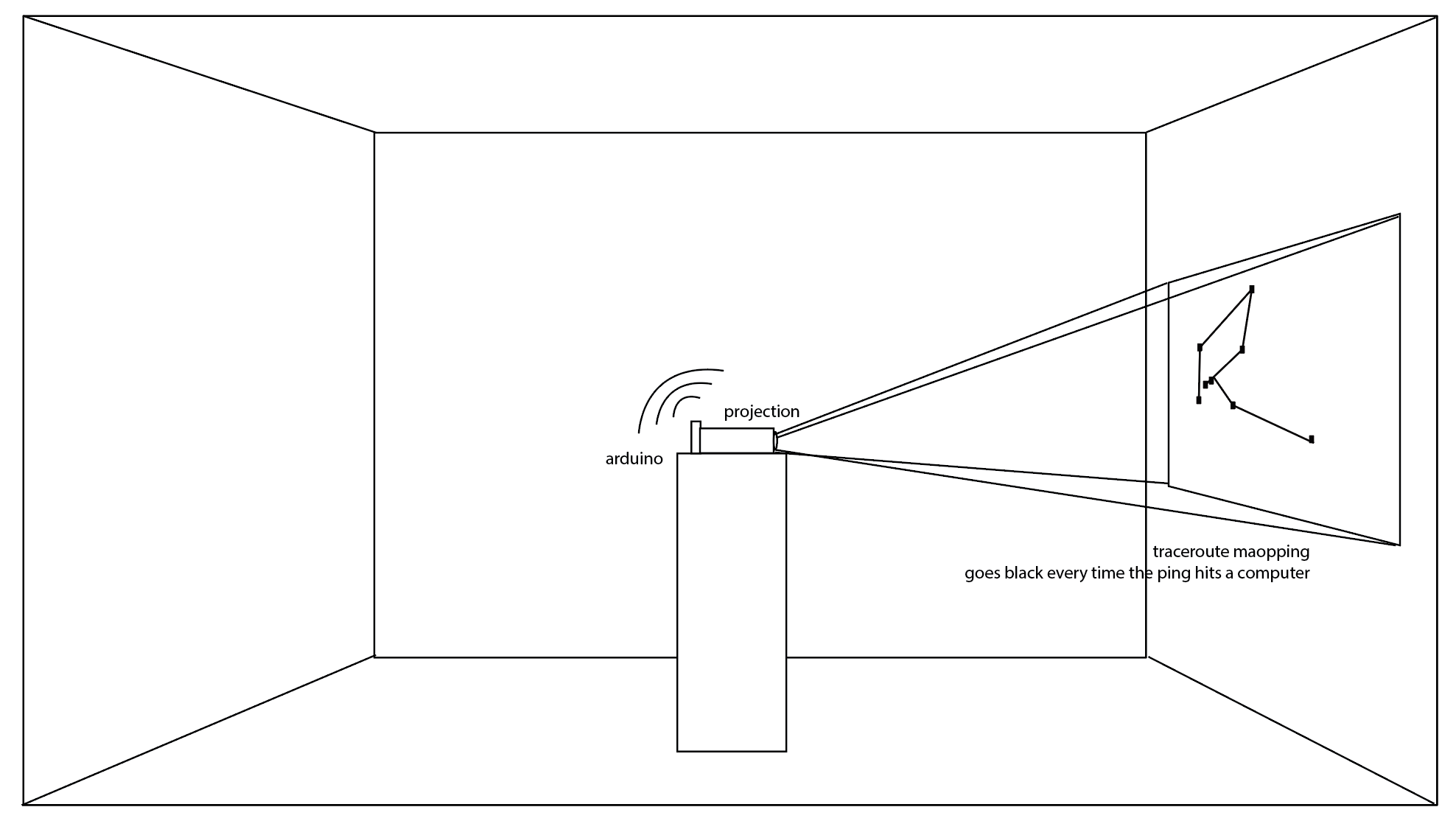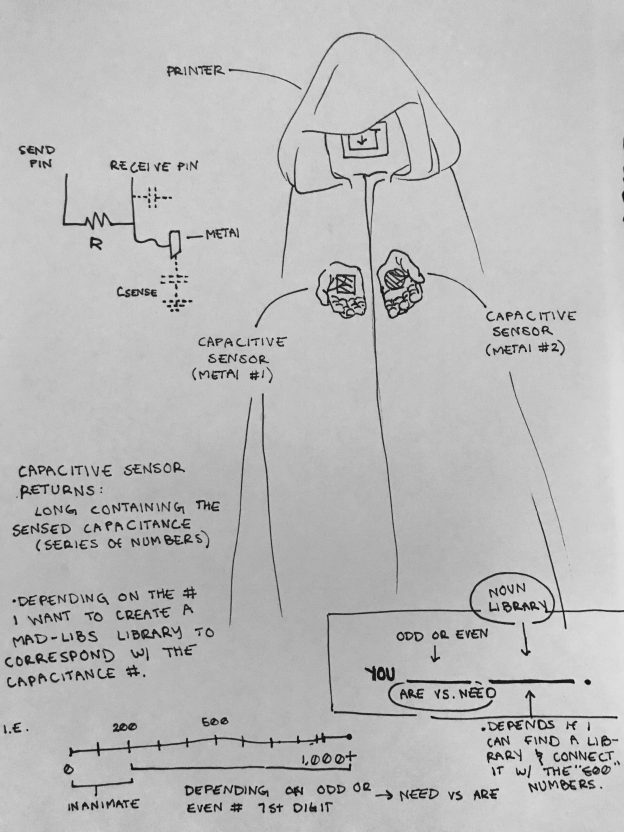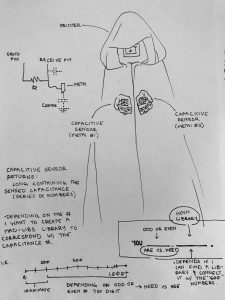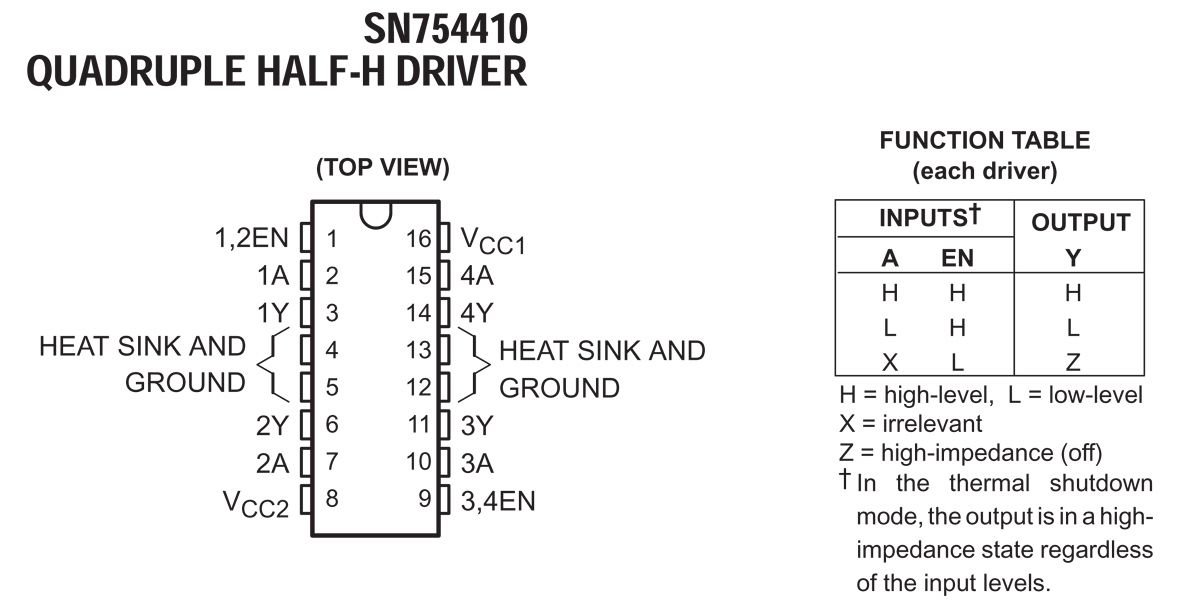Project Description
I am planning to make a sound installation that reveals the cruel reality of domestic abuse against women and children. This installation will be produced in order to encourage hidden survivors of DA (Domestic Abuse) to speak out publicly or privately so that they might receive appropriate support, and enlighten general citizens the reality and prevalence of sexual abuse in family and further, influence policy-makers to provide adequate measurements.
I know personally a woman who is a survivor of DA, and I am going to record her testimony directly. Based on this woman’s real voice and true story, the installation will illustrate the space where all these horrors happened, her room. In order to give satirical and reversing notion against traditional idea of family, I will create a miniature room – as a visually scary place using vivid red color material and weirdly distorted form by laser cut and 3D printing. The structure and objects of this miniature room will follow the real room of hers based on her testimony. The room will be upside down at the top of the installation, and lots of fragments and 3d shapes will be hanging from the room miniature like a waterfall. The fragments shapes are red when it is close to the room, but as it goes down, they will turn clear/white/mirror color. This symbolizes survivor’s eventual freedom and her current status to influence other people. 3 shapes are separately put on in front of the table and they contain touch/proximity sensor. Viewers are provided a headphone, and when they touch each objects, they can hear survivor’s story turn to turn.
Diagram / Sketch
